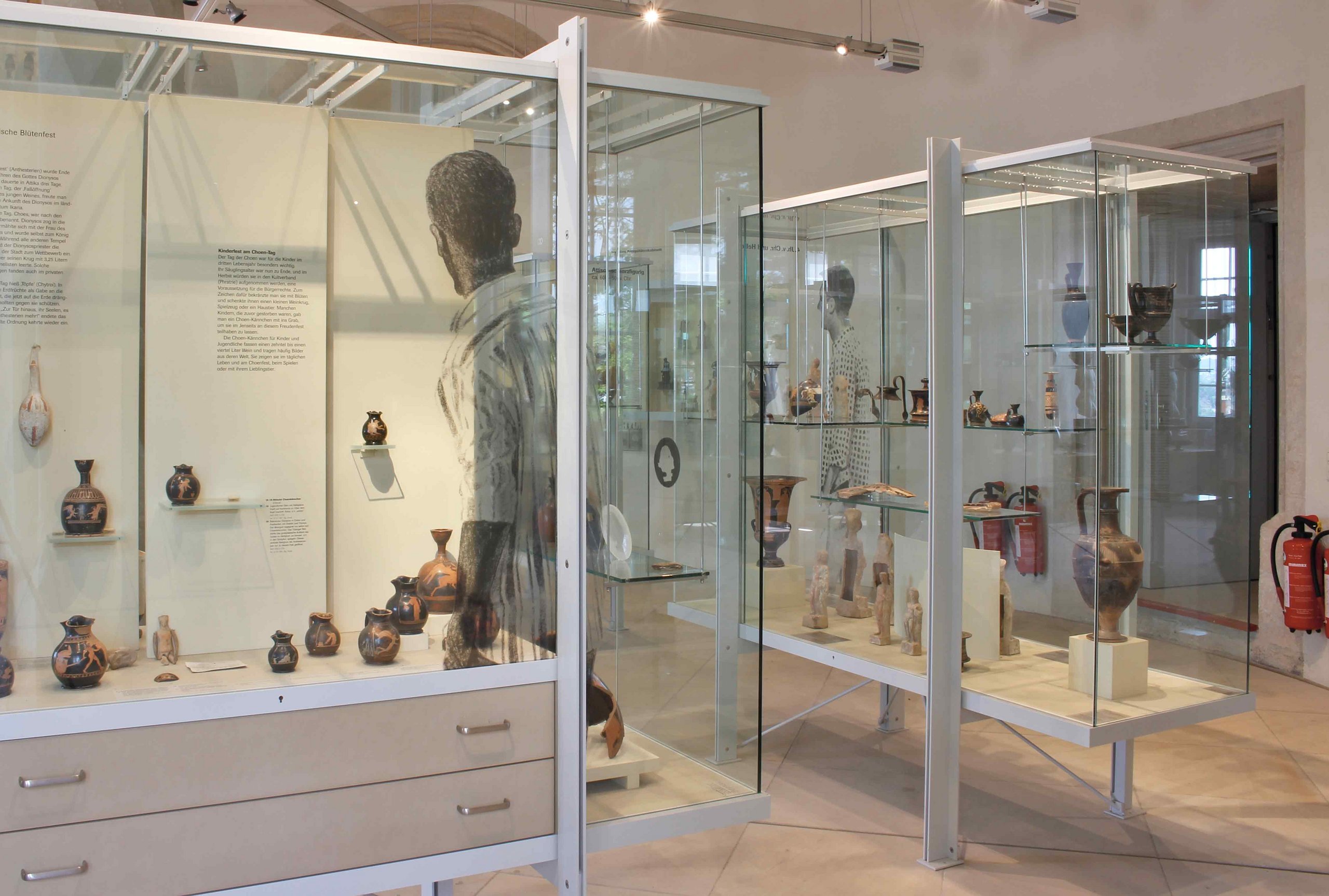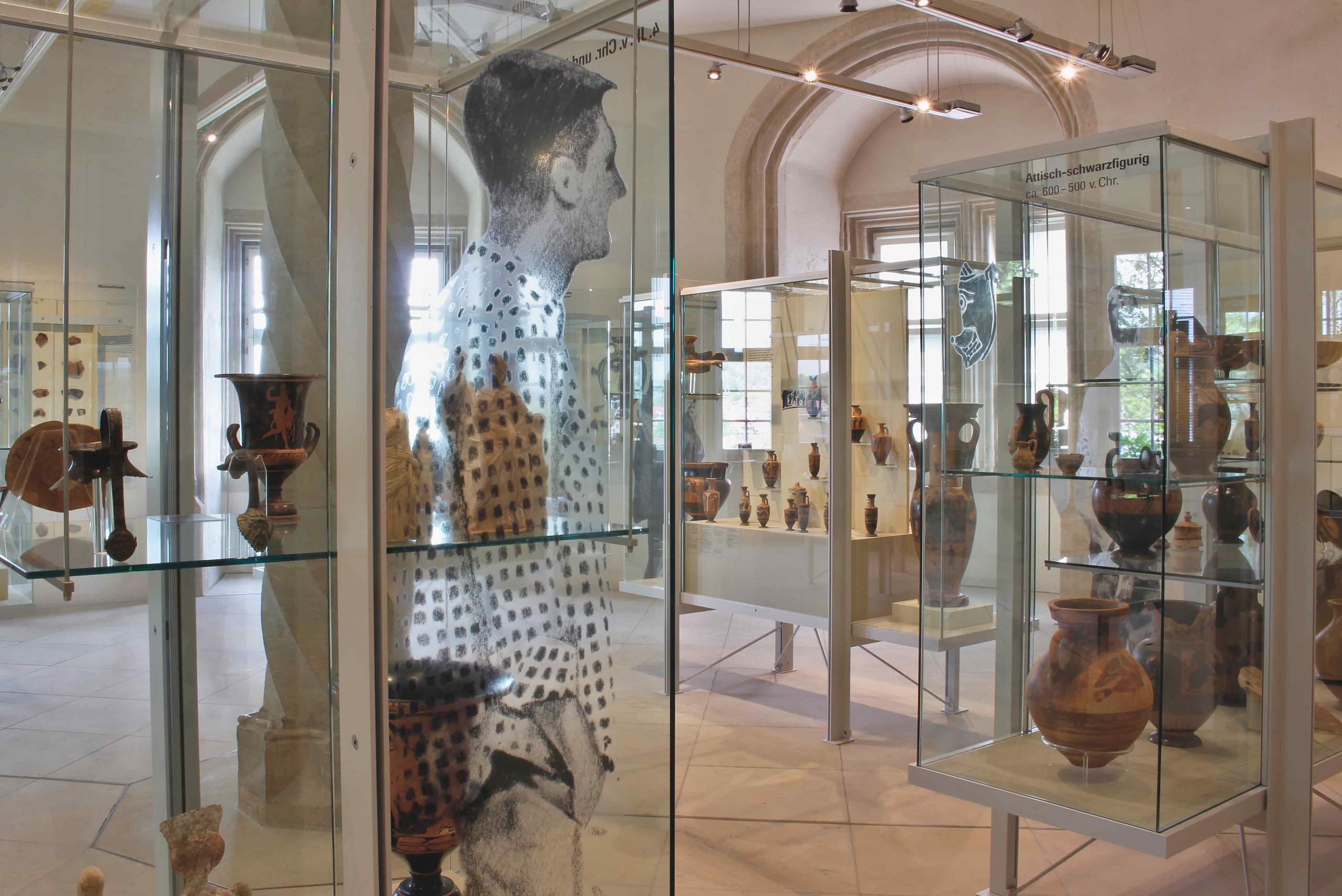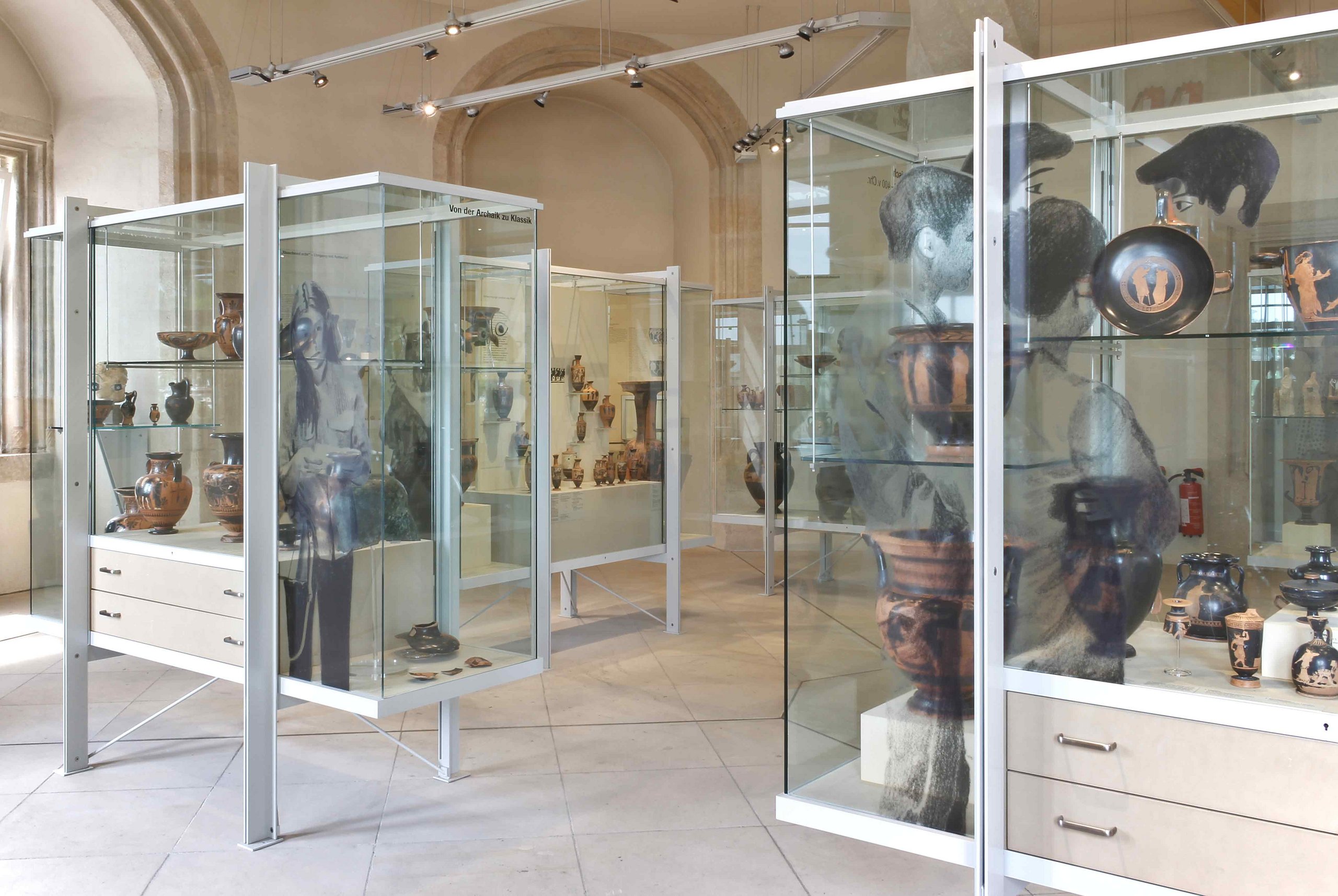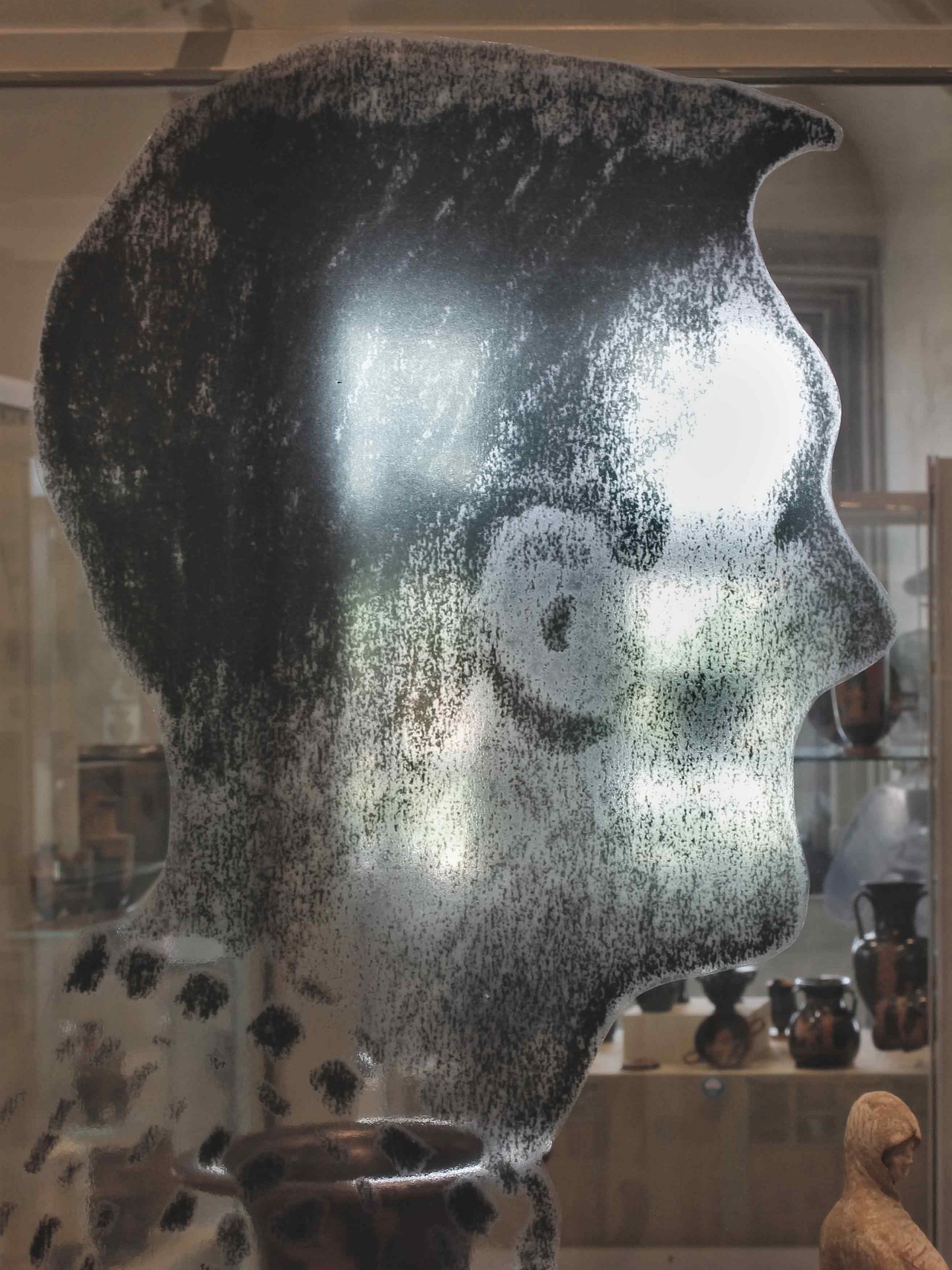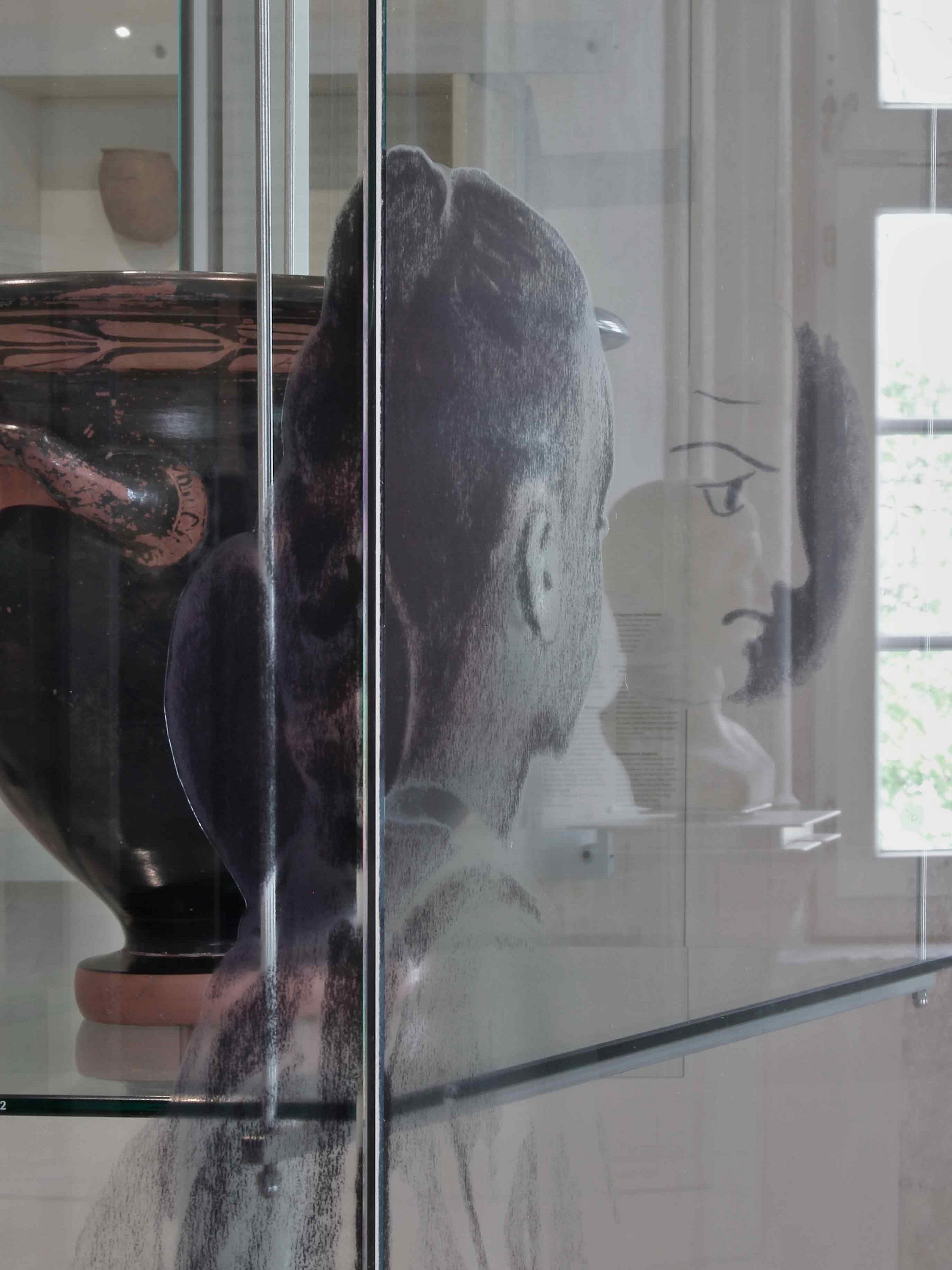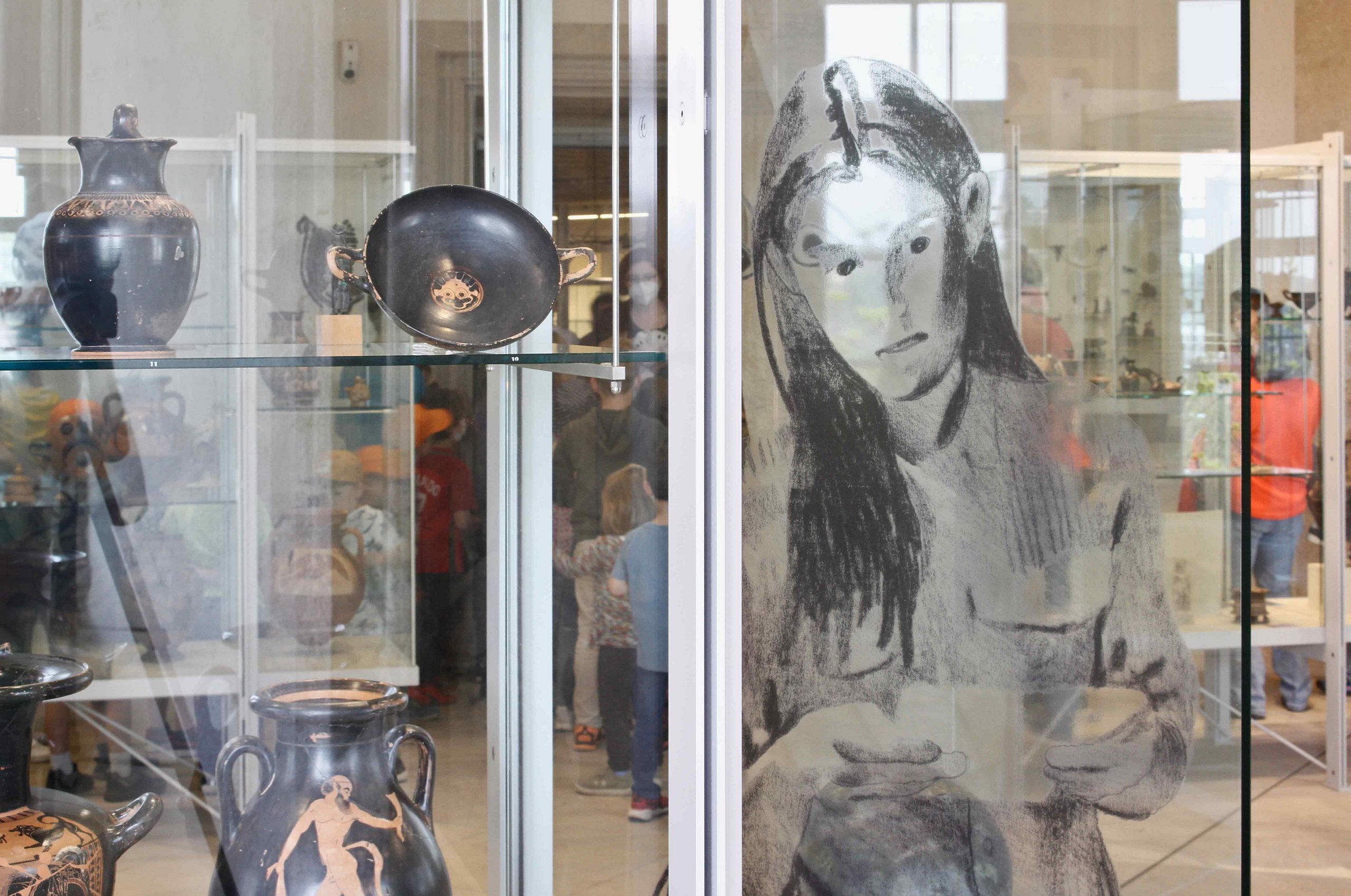Looking Glass
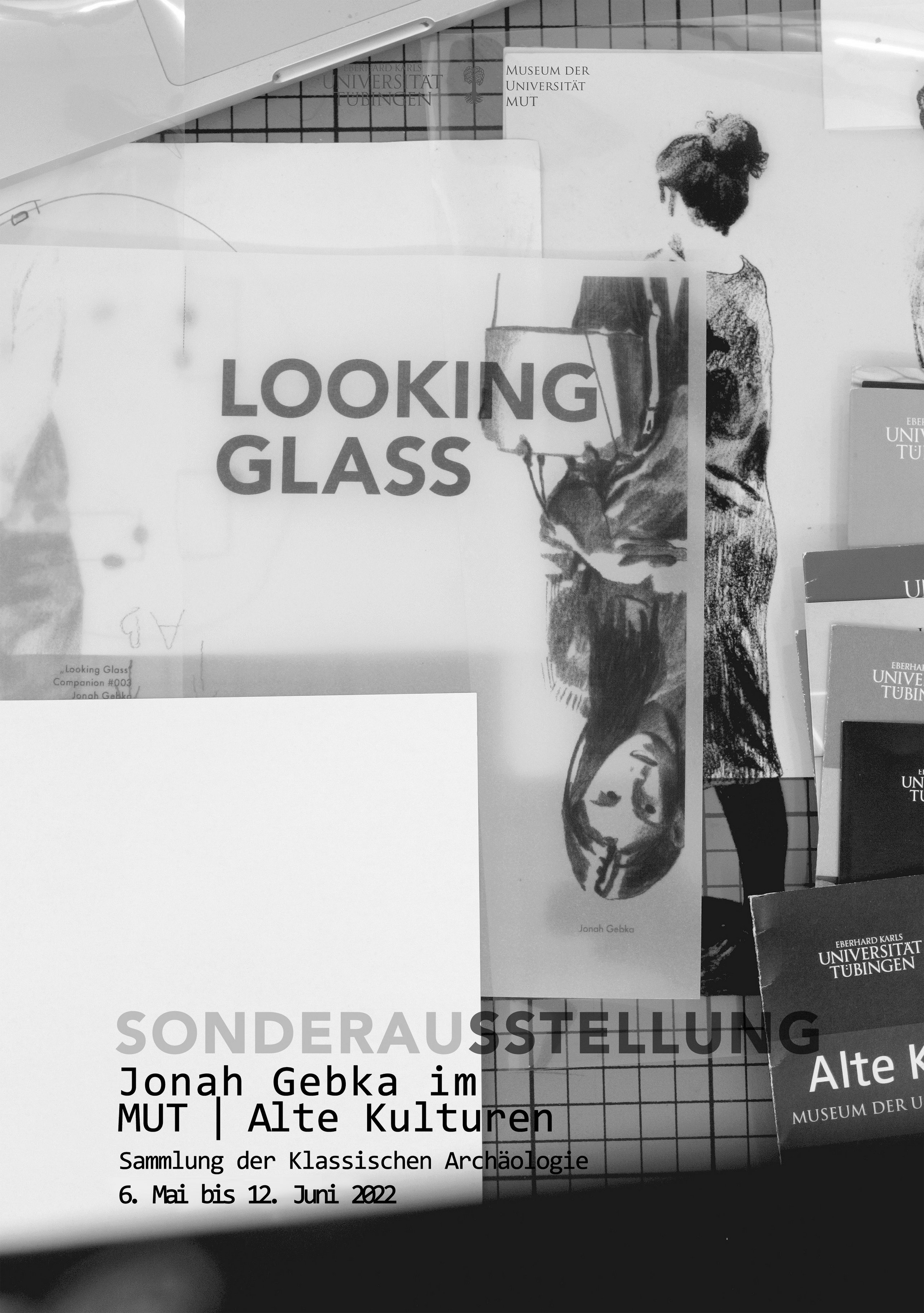
May 6th to June 12th 2022
A visit to a museum is characterized by associations and frameworks. Some are obvious and are quickly perceived as soon as you enter the exhibition space: What selection of objects is presented? Is a piece presented individually or in a large group? Other staging mechanisms, however, are more subtle: How much light is directed at an object? Which room follows the next? On the side of more subtle access conditions is the display case. As visitors walk through the exhibition, the pedestal and glass cube quickly fade into the background. The visitor's gaze, which wanders from object to object, filters out the separating component of the pane.
The special exhibition "LOOKING GLASS" is dedicated to this often ignored and yet blocking element. Artist Jonah Gebka uses the vitrine pane as a material ground for his exploration of the objects in the collection. Gebka's initial approach to the collections proceeded like a regular museum visit: an initial overview was followed by an examination of the departments, objects, and finally the staging. The artist was particularly preoccupied with the latter during his visit to the Round Tower, where objects from the Classical Archaeology collection are presented. As soon as one enters the room, one grasps it in its entirety. The symmetrical arrangement of the display cases also permits numerous "views through". In a subsequent visit by Gebka, who by now was strongly focused on the round tower, a special moment took place: The objects began to return the gaze. For the faces and eyes depicted on bowls, pictorial panels, and vase ornaments often look directly at the visitors, a nonverbal dialogue begun millennia ago. Between this exchange, however, there is always the separating element of the glass plate, the display case.
From the photographs, notes and sketches taken during his visits, Gebka developed motifs that can be divided into two groups: Figures immersed in contemplation are juxtaposed with fragmentary representations of selected objects. The unifying element here is the gaze of the figurative representations. As partially transparent prints, these were applied to the glass panes and thus emphasize the dividing element. Nevertheless, they are also mediators between audience and object. The access and framework conditions of the museum are thematized by the exhibition and partially suspended: Views are obstructed, new perspectives are made possible. The audience can step back and reach new levels of observation.
Opening hours
Wed to Sun 10am to 5pm
Thurs 10am to 7pm
Admission
Adult: 5 €
Reduced: 3 € (children, students, retirees, disabled)
Family ticket: 12 €
Students of the University of Tübingen: free
Insight into the exhibition

